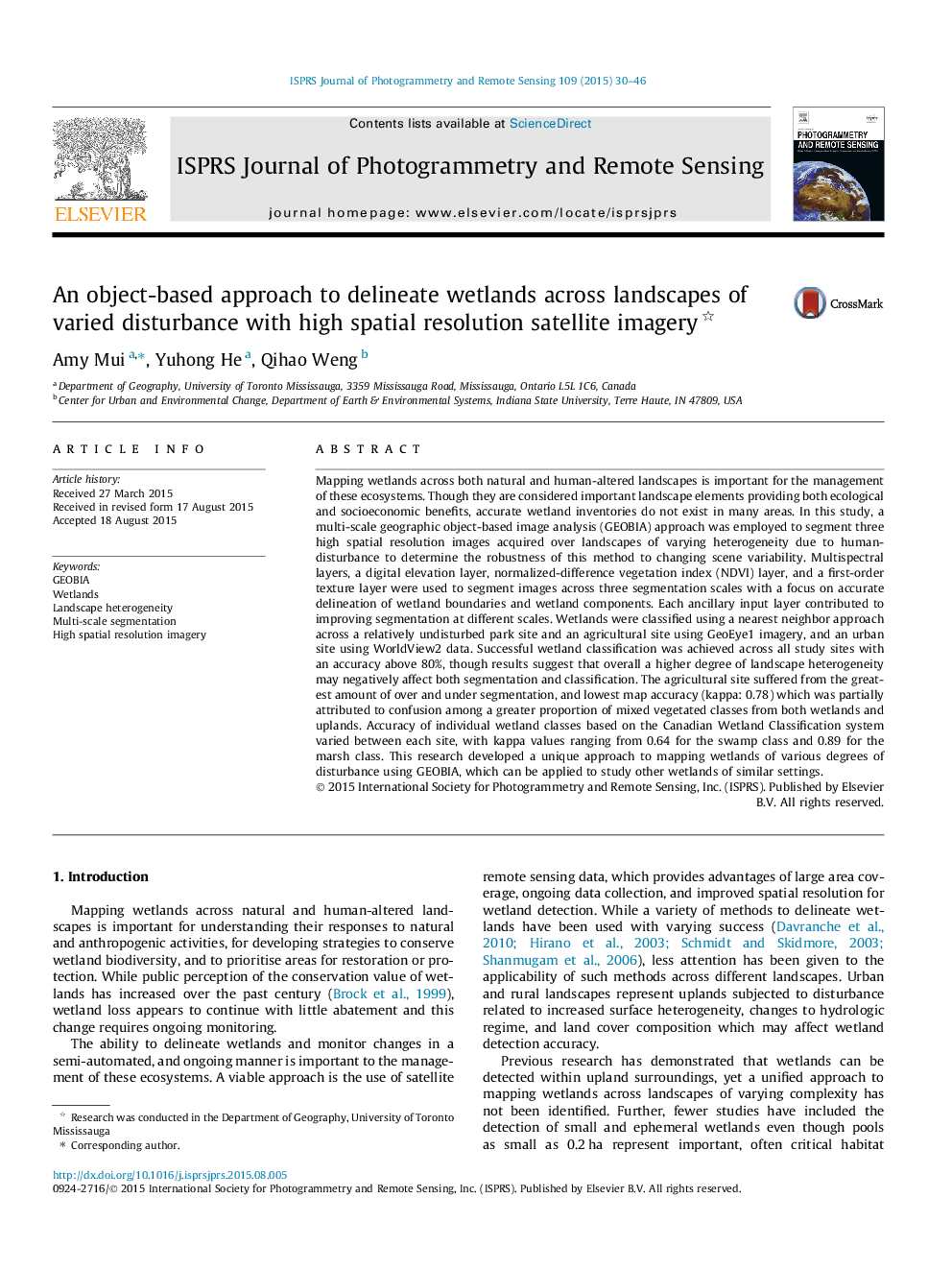| Article ID | Journal | Published Year | Pages | File Type |
|---|---|---|---|---|
| 6949350 | ISPRS Journal of Photogrammetry and Remote Sensing | 2015 | 17 Pages |
Abstract
Mapping wetlands across both natural and human-altered landscapes is important for the management of these ecosystems. Though they are considered important landscape elements providing both ecological and socioeconomic benefits, accurate wetland inventories do not exist in many areas. In this study, a multi-scale geographic object-based image analysis (GEOBIA) approach was employed to segment three high spatial resolution images acquired over landscapes of varying heterogeneity due to human-disturbance to determine the robustness of this method to changing scene variability. Multispectral layers, a digital elevation layer, normalized-difference vegetation index (NDVI) layer, and a first-order texture layer were used to segment images across three segmentation scales with a focus on accurate delineation of wetland boundaries and wetland components. Each ancillary input layer contributed to improving segmentation at different scales. Wetlands were classified using a nearest neighbor approach across a relatively undisturbed park site and an agricultural site using GeoEye1 imagery, and an urban site using WorldView2 data. Successful wetland classification was achieved across all study sites with an accuracy above 80%, though results suggest that overall a higher degree of landscape heterogeneity may negatively affect both segmentation and classification. The agricultural site suffered from the greatest amount of over and under segmentation, and lowest map accuracy (kappa: 0.78) which was partially attributed to confusion among a greater proportion of mixed vegetated classes from both wetlands and uplands. Accuracy of individual wetland classes based on the Canadian Wetland Classification system varied between each site, with kappa values ranging from 0.64 for the swamp class and 0.89 for the marsh class. This research developed a unique approach to mapping wetlands of various degrees of disturbance using GEOBIA, which can be applied to study other wetlands of similar settings.
Keywords
Related Topics
Physical Sciences and Engineering
Computer Science
Information Systems
Authors
Amy Mui, Yuhong He, Qihao Weng,
